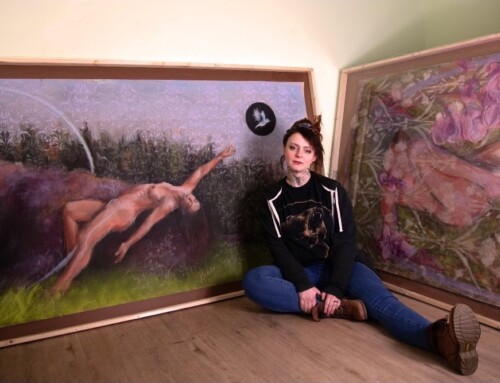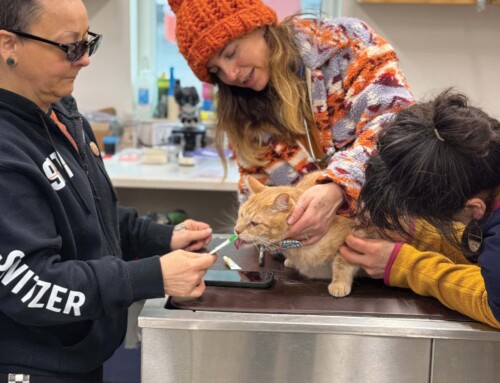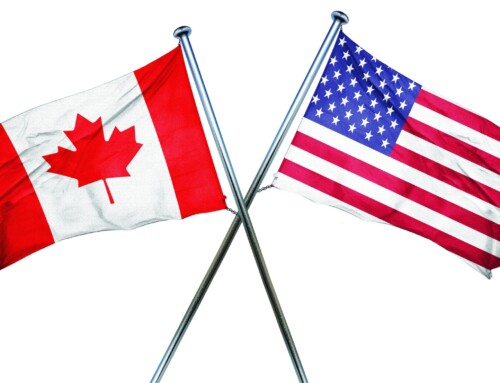A little more than 50 miles from the port of Skagway lies the remains of the worst maritime accident to ever occur in the Pacific Ocean- yet many don’t know of the tragedy or of the large-scale loss of life that ensued from a series of unfortunate coincidences in Lynn Canal almost 100 years ago.
As the centennial of the sinking of the S.S. Princess Sophia approaches, the Maritime Museum of British Columbia is partnering with various communities impacted by the tragedy, including Skagway, to bring the tale of the steamship’s ill-fated final journey to the public.
The memorial will consist of a traveling exhibition that will tell the tale of how the snow-storm of the century, a rocky outcropping in the middle of Lynn Canal and a series of decisions from a well-respected captain came together to result in the death of everyone onboard and the ship settling into its final resting place in the watery depths of the canal.
There isn’t a lot of information available about the Sophia’s tragedy due to the lack of eyewitness survivor accounts. Everything that is known today about the events that transpired are gathered from stories from those in the region at the time, documents pulled from the wreck and official inquires into the causes of the accident.
—–
The S.S. Princess Sophia departed from the port of Skagway around 10 p.m. on Oct. 23, 1918, in decent weather, making her way to her final destination in Victoria, British Columbia.
She was a seaworthy steamship owned by the Canadian Pacific Railway, and was specifically designed to comfortably carry passengers and freight to northern communities in the sometimes treacherous Alaskan waters.
The ship had at least 344 passengers on board as they headed down south before the snow and cold settled in for the season. Some estimates bring the overall count onboard to 360 souls, accounting for those who snuck on without ticket.
In 1918, Juneau was under quarantine to prevent an outbreak of Spanish Flu from spreading elsewhere in the state. Across the globe, the final days of World War One were being fought out with great bloodshed on the battlefields of France.
In Skagway, the residents and the Sophia’s passengers celebrated the close of the tourism season and the rumors that the Great War would soon be coming to an end with a dance and an evening of festivities.
The Sophia reportedly left with those standing in the harbor singing a farewell chorus of “See You in the Springtime,” to the ship.
—–
A blinding snowstorm blew into Lynn Canal late that night and reduced water visibility to zero just as the Sophia rounded Eldred Rock, approximately 30 miles from Skagway.
Despite the rapidly deteriorating sailing conditions, the Sophia kept pushing on down the canal under the charge of Captain Leonard Locke, who was known to be an experienced and competent seaman in Alaska’s rough waters.
The ship blew far off course due to the blizzard conditions and limited navigational technology of the time.
In the middle of the canal was a known dangerous obstacle, a 245-foot long rocky outcropping that usually hid a mere foot beneath the water. Ships passing through the canal stayed close to the shoreline to avoid a collision with the reef.
The Canadian Pacific Railway Company, which owned the Sophia, requested a light be built on the Vanderbilt Reef a year earlier in 1917 to warn oncoming ships of its potential danger, but as money was tight during the war, the U.S. Government felt that funds would be better spent elsewhere.
So when the low visibility and abnormally low tide caused the reef to crest out of the water, there was nothing to prevent the Sophia’s disastrous collision course.
At approximately 2:10 a.m., the Sophia hit it head on at a speed of 11 knots. Her hull came to rest on an even keel on the reef, lulling the passengers and crew into a false sense of security despite the raging storm all around her.
Capt. Locke hoped the high tide would come in and raise the water to a point where it could simply carry the steamship off the reef without any loss of life or damage to the ship.
He wired a message to CPR Headquarters in Victoria to notify them of the accident, but he didn’t sound any alarm bells.
“Vessel hard and fast, taking no water, condition of passengers normal,” he wrote.
One passenger, John H. Pugh, wired his wife in Juneau shortly afterwards to alert her, but did not express any distress either.
“High and dry on Vanderbilt reef, perfectly safe and happy,” Pugh wrote.
—–
Numerous attempts were made to rescue the passengers on board over the course of the next day, but Capt. Locke turned them away deeming it unsafe to transfer passengers in such rough waters.
The Sophia sat aground the reef for more than 40 hours, waiting for conditions to improve. Capt. Locke continued to hope the tide would carry the steamship off the reef, or the weather would improve enough that passengers could safely be transferred to rescue boats.
But by 4:45 p.m. on Oct. 25, the wind had picked up speed so quickly that Capt. Locke ordered the rescue ships to turn around. The wind, he feared, would likely dash their boats against the reef should any attempts of rescue be made.
As conditions worsened, the Sophia sent out an SOS message.
It would be 12 hours before the message would be received at the CPR Headquarters.
Passengers onboard began to understand the gravity of the situation, penning wills and goodbye letters to loved ones.
The storm’s strong winds combined with low air pressure created huge swells of water that pushed the Sophia along the reef, causing the bottom of the steamship to scrape along the rocks and essentially be torn away.
“Ship foundering on reef. Come at once,” the Sophia’s wireless radio operator David Robinson said in a distress message radioed to shore around 4:50 p.m. on Oct. 25.
Thirty minutes later, he sent another message: “For God’s sake hurry, the water is coming in my room.”
Sometime in the next hour, the Sophia would fall off the reef entirely, plunging stern-first into the sea. Upon impact, the ship’s boilers reportedly exploded.
—–
Before rescue boats could arrive, the Princess Sophia buckled in the middle and quickly sank. No passengers would survive.
By some accounts, almost 100 people were trapped below decks when the ship sank. The rest died from exposure, asphyxia or from ingesting oils from the boiler explosion.
When the storm cleared the next morning and rescue boats made their way out into the canal, all that was left to find was the top of the Sophia’s main mast cresting out of the water.
The only survivor of the incident was rumored to be a dog.
—–
The aftermath of the tragedy would continue on for decades.
In the first 48 hours after the sinking, more than 100 bodies were pulled out of the water and more than 180 bodies were found elsewhere along the shoreline, some as far as Douglas Island.
Legal proceedings would continue on 30 years after the tragedy, seeking to examine if blame for the accident could posthumously be placed on Capt. Locke for his decisions to proceed down the canal at a high speed despite the poor weather conditions and not to remove passengers at the first sign of danger.
Ultimately it was decided that Capt. Locke had done all he could under the circumstances.
Conspiracy theories surrounded the accident, as there were no survivors to give their account of what happened during those few days the Sophia was trapped on the reef.
“Of course there are the usual wild rumors prevalent, some of them to the effect that some of the passengers were found with bullet holes,” a report from the Royal Canadian Mounted Police stated.
—–
Despite the scope of the incident and large-scale loss of life, the Sophia’s sinking remains largely unknown to this day because it was eclipsed by an even larger story of the time.
“The disaster is kind of like the West Coast Titanic, but it was not very well known because it happened right as World War I was ending,” Princess Sophia Ad Hoc Committee Vice Chair Jeff Brady said. “So the big news of the day was the armistice, and this kind of got swept under all of those headlines.”
However, as the 100th anniversary of the accident approaches, The Maritime Museum of British Columbia is leading an effort to ensure the tragedy that befell the S.S. Princess Sophia is no longer forgotten.
The museum will partner with the various communities impacted by the sinking to create a commemorative traveling museum that will tell the story of the Sophia’s ill-fated final voyage.
The memorial will be a 4,000 square foot exhibition comprised of 17 different exhibits that will take viewers through the Sophia’s departure the accident and the aftermath.
For smaller venues, such as in Skagway, there will be a 2,000 square foot version of the exhibition that seeks to condense the material from the larger model.
Each community impacted by the tragedy will create a panel for the exhbition.
Skagway’s panel will likely share the story of “survivor” Gil Thompson, whose family did not board the ill-fated ship after hearing a rumor that a case of Spanish influenza was on board, among other narratives from various factions of the community affected by the tragedy, Brady said.
White Pass and Yukon Route has been asked to create its own separate panel.
“White Pass was the company most impacted by the disaster,” Brady said.
The passenger manifest included an estimated 70 to 80 employees of White Pass’ Yukon steamboat fleet who were heading down south after the end of the season until the ice had broken up in the spring.
The final portion of the exhibit is expected to have underwater images of where the S.S. Princess Sophia now rests in addition to interactive displays with information about the crew and passengers who perished in the tragedy. Visitors can hope to behold rarely before seen artifacts and documents that tell the tale of the sinking through primary sources.
The undertaking comes with a $1.8 million dollar price tag, with each individual exhibit at an estimated cost of $50,000. The museum is currently in the process of seeking donations from public and private sectors to fund the endeavor.
The exhibition will tentatively be in the research and design phase from August to March 2017, under construction from April to December 2017 and will tour from Dawson City and Whitehorse, all along Southeast Alaska and into Vancouver and Victoria in 2018.





Leave A Comment